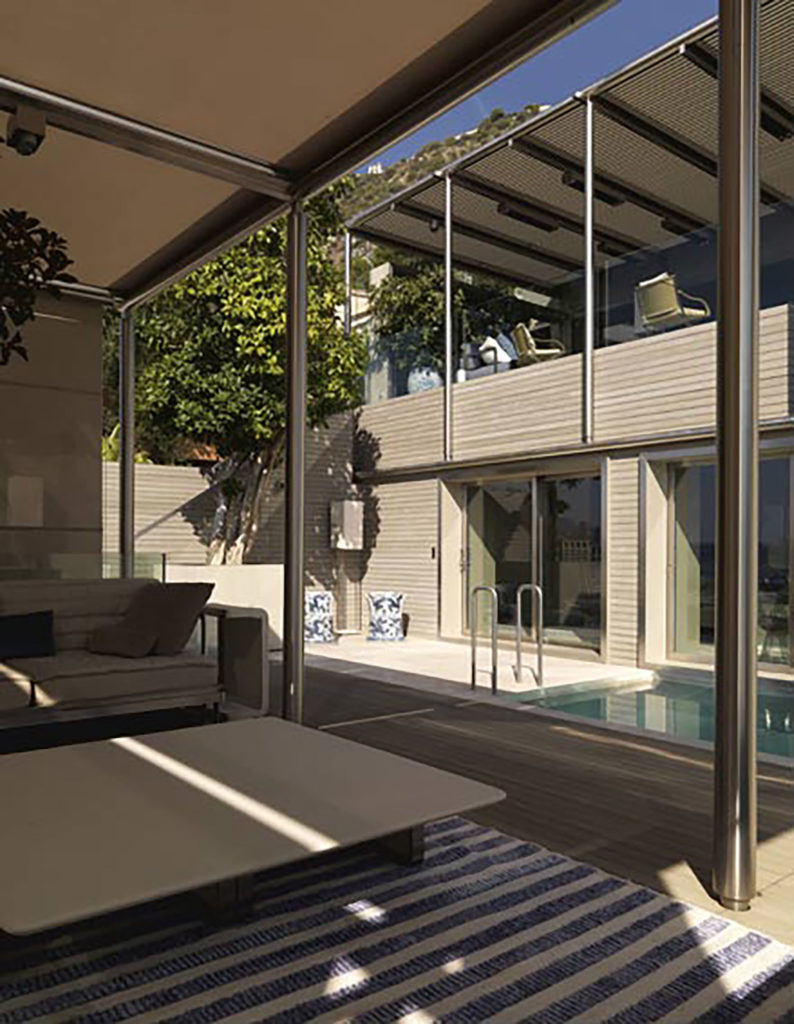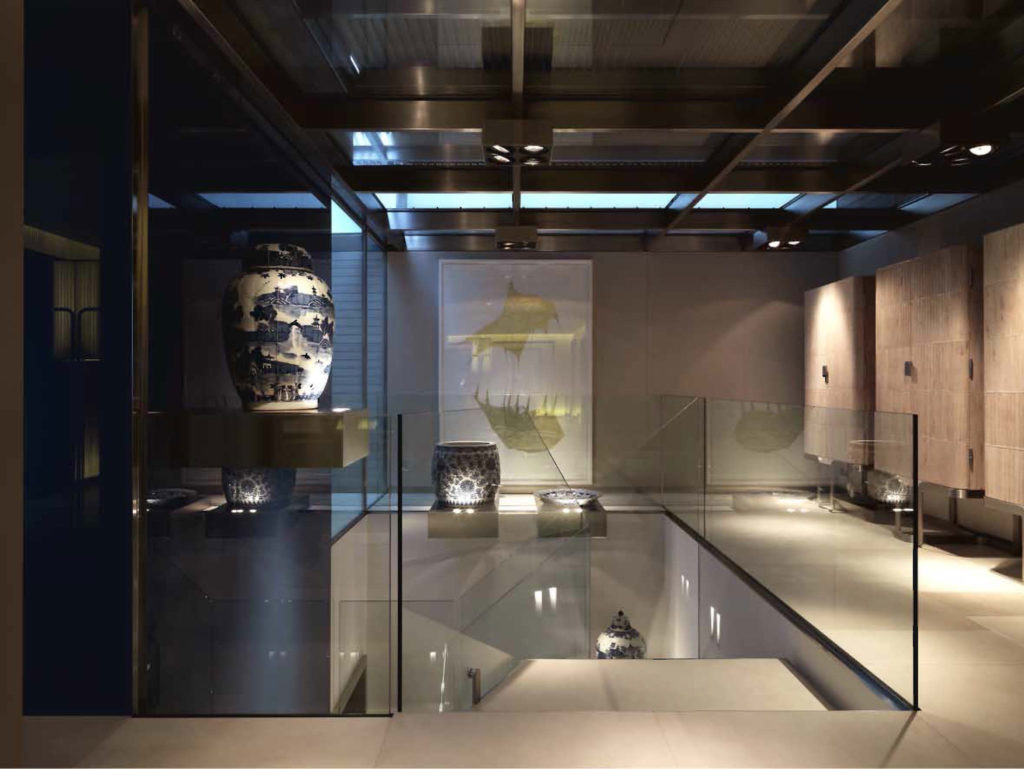VILLA IN ROQUEBRUNE
France [2010-2013]
LPA Collaborators: Sara Nussberger, Antonio Cavallo, Simone Lorenzoni, Serena Bisceglia, Carlo Guerrieri
Photo Credits: Matteo Piazza
As the project involved working with an existing home, the volumes of the new were restricted by those of the old. This villa was conceived like a boat: a response to its coastal location along the Côte d’Azur with its lengthy nautical tradition and a desire expressed by the clients. The choice of materials naturally fell on two typically nautical materials such as steel and wood. The entire house is practically clad in teak, treated and blanched to achieve the classical patina of a boat deck. Steel was used to realise numerous details, for example the joints between the wall and columns. The façade was conceived as a second skin wrapping the original house and cut with openings, in this case the classical squared “O”’s typical of the office’s work. Together with a system of terraces, these elements of continuity between interior and exterior penetrate from the façade into the spaces of the home. In addition to emphasising the projection of the interiors toward the exterior, made possible in a climate where outdoor living is a pleasurable custom, they also emphasise the presence of the pool on the lower terrace. An apparatus of vertical and horizontal filters was designed to protect against intemperate weather and ensure privacy. The volumes of the home are crowned by glass balustrades, carefully designed so as not to block the ocean view.
A crescendo developed over time, the project examines a basic theme such as a stair linking different levels. Designed as an independent steel structure detached from the walls, its square plan is inscribed in a rectangular opening. The result is a free space used to host an important element introduced by the clients: a collection of priceless Chinese vases. Various shelves supporting the vases convert a simple service space, such as a connection between floors, into a vertical gallery offering privileged views of these important ceramic pieces. Even the colours selected for the interiors rotate around the extraordinary Chinese vases. The stair-gallery is a typical expression of Lazzarini Pickering’s holistic vision of architecture, imagined as a complete organism in which structural functions and furniture are integrated within one another from the outset, without any form of interruption.



















